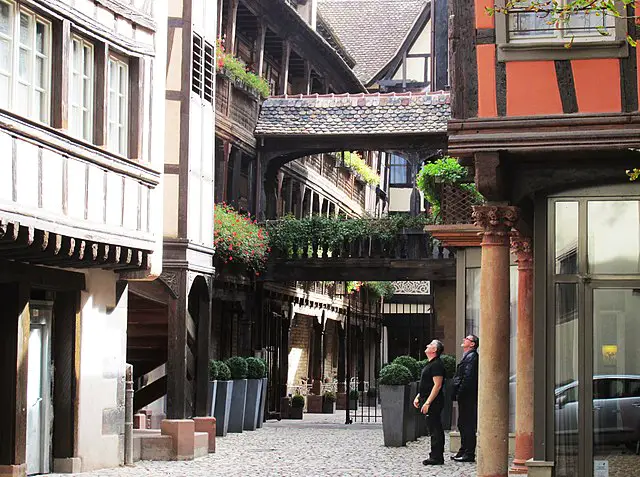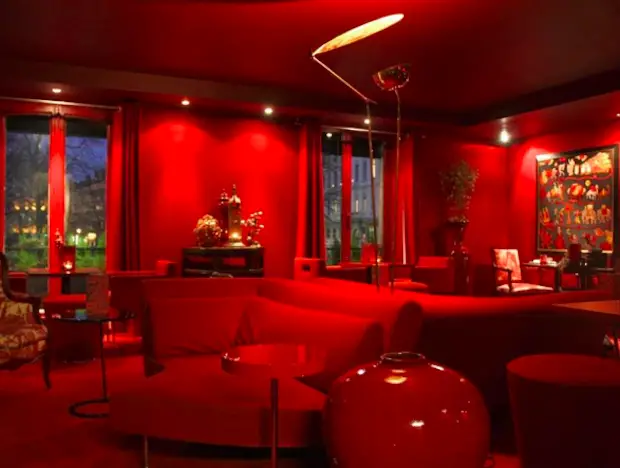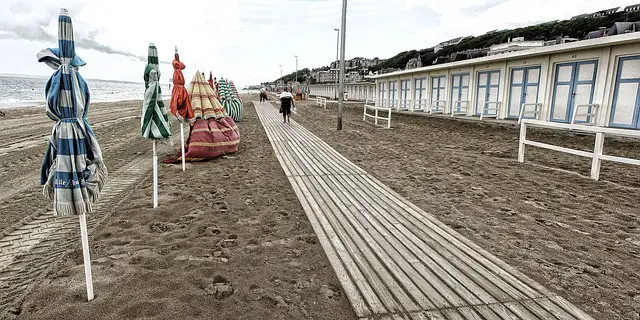Alsace is a region rich in beauty and tradition, so we invite you to discover together why Alsace is so special and attracts visitors from all over the world.
Alsace is one of the most beautiful regions in France. It is known for its Christmas markets, its castles, its wine road and its proximity to Germany. It is also known for its high-quality gastronomy, especially its sauerkraut, its Flammekueche, and its white wines.
Let’s see in detail why Alsace is so special and attracts visitors from all over the world.
Its history
Voir cette publication sur Instagram
Alsace is the smallest region in France with 8,300 km², and it is divided into two departments: Bas Rhin (in the northern half) and Haut Rhin (in the southern half).
It has a rich history, it was set up in the fifth century BC by the last Celtic waves.
A source of tension between France and Germany for centuries, it was annexed for the last time to Germany in 1940 before being returned to France in 1945 at the end of the Second World War.
Because of its history you will find Alsatian architecture is rather unique. It was strongly influenced by the Germanic architecture with the Alsatian half-timbered houses which date from the Middle Ages, but also the Prussian style which you will find in certain districts of the large cities.
Alsace is a region that has endured many conflicts but has managed to rebuild itself to become the region with the 9th largest GDP in France.
Its wine
Voir cette publication sur Instagram
How can we talk about Alsace without mentioning its vineyards which stretch from the north to the south of the region? Alsace is known worldwide for its white wine production. Riesling, Gewurztraminer, Pinot Gris, Sylvaner, Pinot Noir d’Alsace… these are some of the most famous Alsatian wines, they have characteristics to be strong in terms of aroma, sugar and alcohol.
Discover all the wines of Alsace, during your stay and leave with the best wines to share with your friends.
The Alsace Wine Route
Voir cette publication sur Instagram
Over 170 kilometers passing through 73 towns, discover Alsace through the Wine Route, a touristic itinerary that crosses the wine region to discover the wines and their production.
It was created in 1953 by the Tourism Office on the occasion of a car rally; it is the oldest wine route in France.
We advise you to organize one or more wine tastings and visits of vineyards, to discover the essence of this beautiful region.
Its gastronomy
Voir cette publication sur Instagram
Alsace is known worldwide for its gastronomy and its hearty family dishes.
Enjoy a delicious sauerkraut with smoked meat and potatoes, or a more original sauerkraut with fish with your friends or family.
You can also have Flammekueche, cottage cheese pie, the famous Baeckeoffe, Kougelhopf, pretzels, Munster cheese or Rooster with Riesling.
The road of the fried carp
In the south of Alsace, in the Sundgau, you will find the road of the fried carp. The Sundgau is known for its ponds and its carp fields, which date back from the Middle Ages, the monks dug these ponds, to be able to make reserves of fish for the Lent.
Find about thirty restaurants where you can taste excellent fried carp filets, with bones for the most traditional or without for the others, all of which being accompanied by a good glass of Alsatian white wine.
Information & Partner restaurants
It’s Christmas markets
Voir cette publication sur Instagram
You can’t visit Alsace without visiting a Christmas market! It is unimaginable not to associate Alsace with Christmas, as its capital, Strasbourg, is known as the Christmas capital.
From the north to the south of Alsace you will find traditional markets, where you can linger and savor specialities, such as Bredele, do your shopping for your Christmas meal or purchase gifts.
Find our classification of the most beautiful Christmas markets in Alsace: The 11 Most Beautiful Christmas Markets in Alsace: Our Ranking
The Ballon d’Alsace
In the south of the Vosges mountains, you will find the Ballon d’Alsace which culminates at an altitude of 1,247 meters and is shaped like a horseshoe.
Ideal for hiking both in summer and winter, you can also enjoy the ski resort of the Ballon d’Alsace and its 16 ski slopes renowned for their breathtaking panorama.
The beer
Voir cette publication sur Instagram
When you think about Alsace, you can’t miss the beer. Alsace is the number one producer in France; it ensures the production of 60% of the national amount which corresponds to approximately 11 million hectoliters.
The first traces of a brewing activity can be found in Strasbourg, as early as in the year 961.
Kronenbourg, l’Espérance, Licorne, and Meteor are the four major breweries in Alsace. It is possible to visit the Meteor brewery to learn more about this typically Alsatian know-how.
Discover the microbreweries in full rise everywhere in Alsace as well, which propose to taste a beer directly at the place of production.
The Eau de Vie
Voir cette publication sur Instagram
More commonly known as Schnaps in Alsace, spirits are a necessary step after a good hearty meal to help digestion.
This alcohol is produced locally, following a fermentation of different fruits, such as plums, cherries, mirabelle plums, quetsches or even raspberries, which are then distilled.
If you want to learn more about this process and tradition, you can visit the musée des eaux de vie.
Its dialect, Alsatian
Voir cette publication sur Instagram
When you are in Alsace, it is not impossible that you will hear the locals speaking a language similar to German; in fact, they are speaking Alsatian. This dialect bears a strong imprint of the region’s history and the German occupation.
Even if Alsatian has very old roots, we unfortunately notice a decrease in the use of this language.
Indeed, under the occupation during the Second World War, the use of Alsatian was the most popular language. However, after the liberation, the old connection between Alsace and the Nazi regime changed the relationship of the Alsatians to their culture. Alsatian became a taboo language and it was considered inappropriate to speak it.
Today, even if the language is dying, many young people try to learn it again so that it does not disappear.
Its castles
Voir cette publication sur Instagram
With more than a hundred castles, Alsace is the region of Europe that has the most.
These castles overlook the Alsace plain and allow you to have a breathtaking view of the region.
Whether it is in perfect condition like the Haut-Koenigsbourg Castle, or in ruins like the Castle of Ferrette, the oldest castle in Alsace dates from 1105, whose Prince Albert II of Monaco was the Count.
There is something for everyone, enough to walk around and have a wonderful day.
Its borders
Voir cette publication sur Instagram
Alsace is a border region with Germany and Switzerland, which makes it very attractive.
In a few minutes while you are in Alsace you can get into one of these two countries. And in one step you can visit Germany and/or Switzerland, two countries that are full of particularities and places to visit.
If you go through Germany, stop at Europa-Park, the largest amusement park in Europe and which was as ranked the best amusement park in the world on several occasions.
And if you are passing through Switzerland, discover breathtaking landscapes. But if you come at the beginning of the year during the carnival period, you must go to Basel to discover its carnival which starts on the Monday following Ash Wednesday at 4 am. It is one of the largest and oldest carnivals and is also a UNESCO World Immaterial Cultural Heritage Site.
Its museums
Voir cette publication sur Instagram
Because of its past, Alsace carries with it the vestiges of wars. If you are passionate about history and culture, we advise you to stop by one of the many museums and memorials of the Second World War such as the Ecomusée d’Alsace which recreates a traditional Alsatian village, or the Historical Museum of the city of Strasbourg.
If you wish, you can also visit the Struthof (French website) concentration camp and the Alsace-Moselle Memorial, a few kilometers away from Strasbourg.
I aim to share my tips and recommendations for the beautiful country of France. My goal is to help you plan your next adventure, whether it’s a weekend getaway or a once-in-a-lifetime trip. From finding the best hotels and restaurants, to discovering unique activities and sights, I’ve got you covered!




